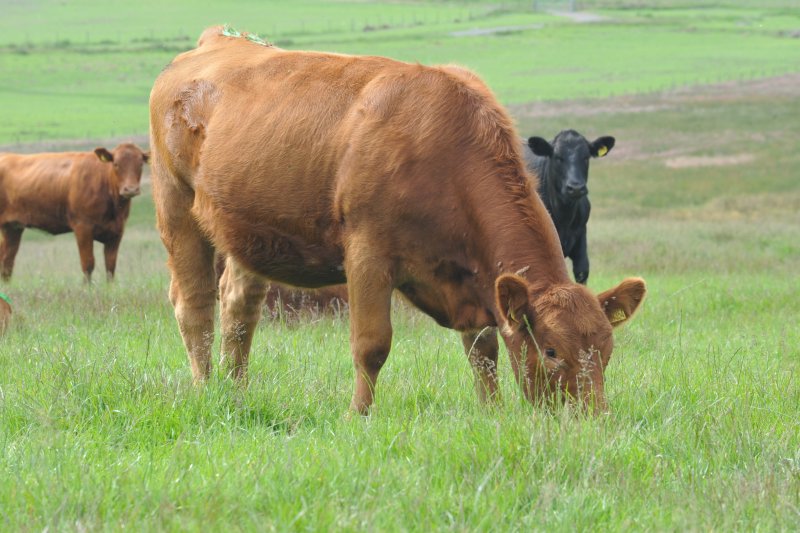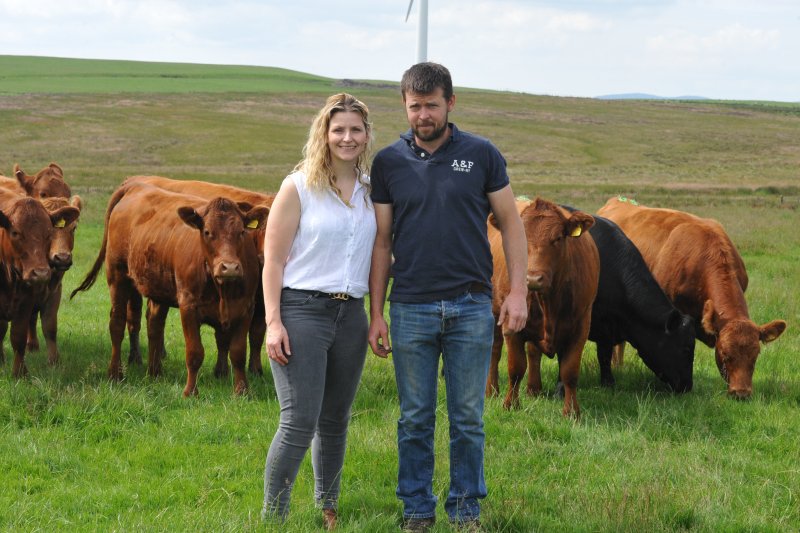
A Welsh suckler-to-beef enterprise is aiming to cut its calving period to 10 weeks by using bolus technology to aid heat detection in heifers and shorten the breeding period.
A compact calving period would optimise the use of spring grass and make nearly every element of managing the herd of Stabilisers easier at Moelogan Fawr, near Llanrwst, Conwy.
Farmers Llion and Sian Jones, who have calved 130 cows and heifers this season, want to reduce the calving period from 12 weeks to 10 to make the herd as productive and profitable as possible.
To achieve this, they have embarked on a project with Welsh government's industry scheme Farming Connect in which boluses that detect heat and other activity have been administered orally into the rumens of 40 12-month-old heifers.
Until this year they had been synchronising heifers to AI at 14 months to breed two weeks before the main herd.
Progesterone implants were used to control the oestrus cycle and heifers were artificially inseminated as one group in the last week of June, on the ninth day of the programme; in 2019 the Jones’ achieved a first service AI pregnancy rate of 57%.
After that first AI cycle, a homebred Stabiliser bull was turned in with the heifers, to catch silent heats.
The bull was removed after 17 days and any heifers on heat inseminated - the second service AI pregnancy rate was 34% and the third 6%. The empty rate was 3%.
The introduction of the bolus means there will be no synchronisation programme this year and this has cost and time-saving benefits.
“We can use a more natural approach and we won’t have the costs associated with synchronisation, it can be a time-consuming process," Llion Jones said.
It should also remove the need for vet checks to establish if the animals are cycling.
The bolus technology works by measuring the temperature in the rumen and the animal’s activity levels, and transmits this data in real time to a base station.

The data can be shared with others, such as vets and feed advisers. The bolus also has a calving alert.
As well as tracking heats and calving status, the bolus allows Llion and Sian to monitor the health status of every animal.
This is already proving valuable, said Llion. “We received a notification that two heifers had high temperatures. We hadn’t noticed there was a problem but when we checked them more closely we could see they were slow and their ears were drooping.
“The vet recommended a course of antibiotics and they were fine after that. Without the bolus we wouldn’t have picked up on the problem as quickly."
The advantages of a shorter calving period lie in the easier management of both cows and calves, as they are all at a similar stage of the production cycle, and through simplifying feeding and husbandry practices.
All heifers are currently retained as replacements as the business has been increasing the size of the breeding herd.
The best of the male offspring are sold as breeding bulls and the remainder are finished on farm and sold direct to slaughter to ABP or Dunbia or liveweight at Mold livestock auction.
Tissue testing of calves through ear tagging provides important DNA and BVD information to inform those decisions.
Not only are there management and financial benefits from shortening the calving period but for the Jones’ it would give them more time to spend with their young family and to devote time to other farm jobs after calving and also lambing their flock of 1,200 ewes.
They also believe the bolus can help them make savings on AI: “We will hopefully save a bit on the straws because the bolus has a colour-coded system that shows when the ideal time is to inseminate," said Sian.
